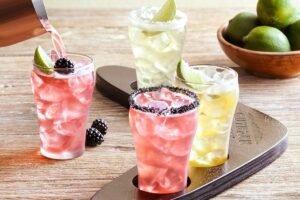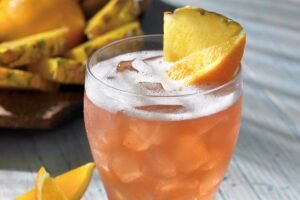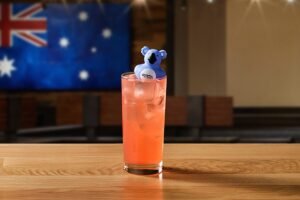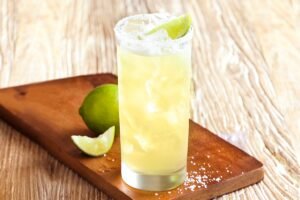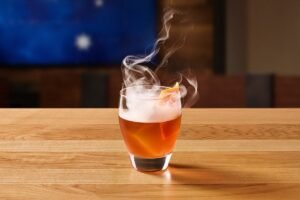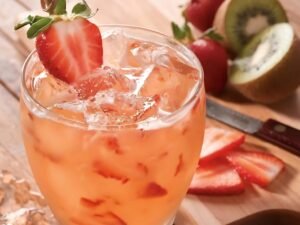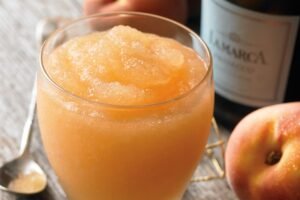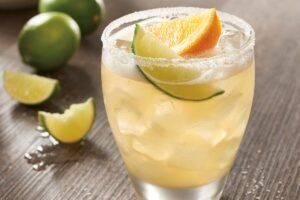Outback’s specialty cocktails exist in a weird space – they’re seriously crafted drinks hiding behind goofy Australian names at a steakhouse that most people visit for meat, not mixology. Yet these cocktails generate fierce loyalty, with regulars who come specifically for their Wallaby Darned or Sauza Gold Coast ‘Rita. The dine-in-only restriction isn’t just legal logistics; it’s about preserving the experience that makes these drinks special.
The cocktail program punches above its weight class, using fresh juices, quality spirits, and actual bartending techniques that wouldn’t shame a craft cocktail bar. Sure, you won’t find molecular gastronomy or smoke bubbles, but you’ll get consistently excellent drinks that pair perfectly with a 20-ounce porterhouse.
Why These Drinks Die During Transport
The dine-in-only restriction makes sense when you understand what makes these cocktails work. The Wallaby Darned’s frozen texture survives maybe 10 minutes in optimal conditions. The layered presentations collapse during movement. Garnishes like flamed orange peels or grilled pineapple require immediate consumption.
Temperature matters enormously. That first sip of properly chilled cosmopolitan hits different than lukewarm vodka in a plastic cup. The salt rim on margaritas dissolves during transport. Carbonation in fizzy drinks disappears. These aren’t just drinks; they’re experiences that require proper glassware, temperature, and timing.
The theater element can’t travel. Watching bartenders muddle fresh fruit, flame garnishes, or create layered pours adds value beyond liquid in glass. The anticipation built during preparation enhances enjoyment. To-go eliminates this psychological component that justifies premium pricing.
The Secret Life of Outback Bartenders
Outback bartenders occupy interesting space between volume slinging and craft cocktails. They’re making Wallaby Darneds between pouring draft beers, requiring efficiency without sacrificing quality. The good ones develop signature touches – extra peach in the Wallaby, perfect salt application on margaritas, consistent cosmopolitan color.
Training takes two weeks minimum, unusual for chain restaurants. Bartenders learn not just recipes but techniques. Proper muddling that extracts oils without bitterness. Shaking duration for optimal dilution. Layering techniques for visual appeal. This investment shows in consistency across locations.
The bartender hierarchy becomes apparent during busy shifts. Senior bartenders handle specialty cocktails while newer staff pour beers and wines. This specialization ensures quality while managing volume. Regular customers learn which bartenders nail their preferred drinks, creating relationships that drive repeat business.
Time of Day Drinking Patterns
Lunch cocktails follow predictable patterns. Businesspeople order “lighter” options like sangria or fizzes, maintaining professional appearances. The Wallaby Darned dominates among groups of women celebrating birthdays or promotions. Nobody orders Knockout Punch at noon unless they’re unemployed or on vacation.
Happy hour transforms the bar. 3-6 PM brings discounted specialty cocktails, creating crowds that rival dinner rush. The Gold Coast ‘Rita becomes economical at $7, making premium tequila accessible. Smart drinkers know happy hour uses full recipes, not watered versions.
Late night sees different choices. Martinis and top-shelf margaritas dominate as diners justify splurges after expensive steaks. The dessert cocktail phenomenon – Wallaby Darned instead of Chocolate Thunder – saves calories nobody actually counts after eating Bloomin’ Onions.
The Recipe Vault
Outback guards cocktail recipes surprisingly carefully. The Wallaby Darned formula took two years to perfect, balancing peach intensity with champagne effervescence. Corporate maintains exact specifications that franchises can’t modify.
The sweet-and-sour mix recipe represents significant competitive advantage. Made fresh every morning using specific ratios of lemon juice, lime juice, water, and agave nectar. The agave provides complexity that simple syrup lacks. Competitors using bottled mix can’t match the brightness.
Even garnish specifications get detailed documentation. Orange wheels cut to 1/4 inch thickness. Pineapple wedges grilled for exactly 90 seconds per side. Cherry stems left on for easy removal. These details seem minor but affect presentation and experience.
Bar Seating Psychology
The bar at Outback serves multiple functions beyond drink service. Solo diners gravitate there, avoiding awkward table-for-one situations. First dates use bar seating for easy escape routes if things go south. Regulars maintain “their” seats, creating micro-communities within restaurants.
Cocktail consumption at bar seats exceeds table ordering by 40%. The proximity to preparation, ability to chat with bartenders, and social atmosphere encourage experimentation. Watching drinks being made creates desire for specialty cocktails over basic beer orders.
Bartenders become therapists, entertainment, and recommendation engines. They remember regular orders, notice mood changes, celebrate victories and commiserate defeats. This relationship building creates loyalty that transcends food quality or pricing. People return for bartenders as much as beverages.
The Margarita Wars
Outback’s margarita program competes in crowded space. Every restaurant offers margaritas, but execution varies wildly. The Gold Coast ‘Rita succeeds through balance – not too sweet, not too tart, with tequila presence that cheaper versions hide.
The rocks versus frozen debate rages among customers. Purists insist rocks preserves tequila character. Others want frozen for hot weather relief. Outback offers both without judgment, though bartenders privately prefer rocks for flavor integrity.
Salt application technique matters more than most realize. The rim gets moistened with lime juice, not water, adding citrus essence. Salt application covers only half the rim, allowing choice with each sip. Coarse salt stays crunchy longer than fine salt that dissolves immediately.
Seasonal Cocktail Rotations
Limited-time cocktails create urgency and variety. The summer watermelon margarita uses fresh fruit available only June through August. Fall brings apple cider sangria with cinnamon stick stirrers. Winter features cranberry Moscow mules with sugared cranberries.
These seasonal offerings test potential permanent additions while creating excitement. The blueberry lemonade started as summer special before earning permanent status through customer demands. Failed experiments disappear quietly – the lavender martini lasted exactly one month.
Holiday cocktails get special treatment. The mistletoe martini with white chocolate liqueur and cranberry appears Thanksgiving through New Years. Valentine’s brings chocolate-covered strawberry cocktails that photograph beautifully. These occasion-specific drinks drive traffic during typically slow periods.
Why the Bar Stays Busy
Specialty cocktails at Outback work because they exceed expectations. Nobody anticipates craft cocktail quality at chain steakhouses, making competent execution feel exceptional. The combination of quality ingredients, proper technique, and reasonable pricing creates value that keeps customers returning.
The dine-in-only restriction preserves what makes these drinks special. The experience encompasses more than liquid in glass – it’s the atmosphere, the theater, the social element that can’t be packaged for takeout. These cocktails give reasons to visit beyond hunger, creating occasions rather than just fulfilling needs.
Whether you’re destroying a Wallaby Darned on random Tuesday or sipping top-shelf margaritas during celebration dinners, these specialty cocktails prove Outback understands that great meals deserve great drinks. They’ve created a bar program that stands independently while complementing their food, giving one more reason to choose Outback over competitors who treat cocktails as afterthoughts.
